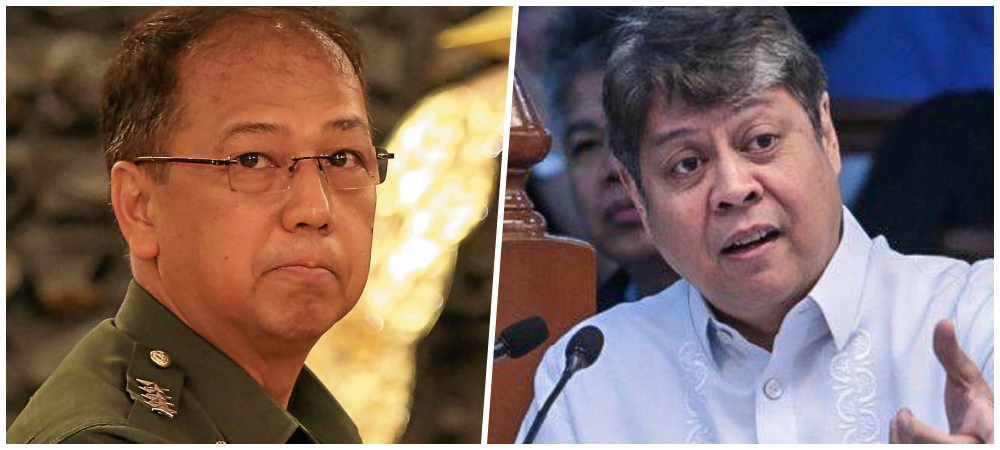The Senate will open on Monday an inquiry into the government’s vaccination plan amid concerns that it has no doable plan for inoculating Filipinos against COVID-19 as vaccines become available next year.
The senators agreed to convene as a committee of the whole after Sen. Francis
Pangilinan expressed alarm during a privilege speech that the government had yet to lay out a vaccination program.
Pangilinan also pointed out the failure of state agencies to answer critical questions raised by the senators about a vaccination program for which Congress allotted P72.5 billion in the 2021 national budget.
In the dark
“The fact that the senators are pretty much in the dark as to the game plan does not bode well for transparency and accountability in the vaccine rollout,” he said.
Other countries, including the United Kingdom and the United States, have already begun vaccinating their citizens against the severe respiratory disease caused by the new coronavirus SARS-CoV-2.
“We [can] only pin our fervent hope that Filipinos will have the same access to safe, effective and affordable doses needed to end the spread of the disease and the pandemic,” Pangilinan said.
The Senate immediately adopted the resolution Pangilinan filed for the inquiry.
With the Senate sitting as a committee of the whole, the matter will now be taken out of the jurisdiction of the committee on health headed by Sen. Christopher “Bong” Go.
Pangilinan said senators, since the government began discussing the acquisition of vaccines, had been asking such questions as how safe were the vaccines and how much funds would be needed to vaccinate 70 percent of the population.
He also asked whether there was need for Congress to pass a supplemental budget for the vaccine program, and what timetable the government would follow to complete the vaccination of 70 percent of all Filipinos, and how many would be inoculated in 2021 with a budget of P72.5 billion.
Unanswered questions
“When will the vaccination begin? How will it be rolled out? Who will be vaccinated first? How will they be vaccinated and by whom? Do we have the logistical capacity to ensure an effective delivery of the vaccines to the grassroots? What is the game plan?” Pangilinan asked.
The inquiry, he said, would cover “a complex number of various issues such as funding and country-to-country negotiations for the vaccine.”
It “may involve matters affecting diplomatic relations, logistical support, private sector mobilization, including digital infrastructure and sophisticated transport systems, and public health concerns, among other [things],” he said.
A massive vaccination program also needs an effective information and dissemination campaign to make it work, Pangilinan said, citing a Social Weather Stations poll in September that found that 31 percent of Filipinos did not want to be vaccinated.
“The country needs clear and concrete action steps and deliverables in a vaccination program that our citizens can trust and believe in. It is incumbent upon the government to provide this,” he said.
The government had said it was negotiating to get vaccines from a number of foreign pharmaceutical companies that had developed vaccines that had been proven in mass trials to be effective against COVID-19.
The most effective are Pfizer’s vaccine, at 95 percent, and that of the British company AstraZeneca, at 70 percent, and which is also the cheapest at $10 (about P500) for the two-dose regimen.
The Philippine private sector has secured 2.6 million doses of the AstraZeneca vaccine, which will be donated to state health workers and employees in private businesses. (See story on this page.)
The government, according to Secretary Carlito Galvez Jr., head of the vaccine program, said it was securing 25 million doses of the vaccine developed by the Chinese pharmaceutical company Sinovac.
Most expensive
Sinovac’s vaccine, CoronaVac, is the most expensive of the candidate shots. It costs $60 (about P3,000) for two doses.
Galvez said on Monday that he met with Sinovac representatives on Friday and that their discussions were “very substantial.”
He said he informed the Sinovac representatives that the Philippines needed 25 million doses of CoronaVac and would like to get these by March.
Galvez said he expected to meet again with the Sinovac representatives this week to advance the discussions. “We want to finalize our … negotiation this week so we can firm up the head of terms, and also we are looking at the exact time of the distribution,” he said.
Sinovac told Philippine officials that it was confident it could have the supply by April, but Galvez said the country preferred to have the vaccine by the first quarter of 2021.
Philippine Ambassador to China Jose Santiago Sta. Romana said in a videoconference on Monday that there was confidence in Chinese COVID-19 vaccines not just in China but in other countries as well.
He said that aside from Sinovac, three other pharmaceutical companies—Sinopharm, CanSino Biologics and Anhui Zhifei Longcom Biopharmaceutical—were developing COVID-19 vaccines that had gone into Phase 3 trials.
Sinovac’s vaccine, he said, had gone into Phase 3 trials in 15 other countries, including Bahrain, Brazil, Peru, Turkey, Indonesia and the United Arab Emirates.
But data from China and other countries will still be scrutinized by the Food and Drug Administration before the vaccines are authorized for use here in the Philippines, he said.
On Monday, the Department of Health (DOH) logged 1,339 additional coronavirus infections, raising the overall number of confirmed COVID-19 cases in the country to 450,733.
Quezon City reported the most number of new infections, 147, followed by Davao (124), Rizal (65), Laguna (50) and Manila (49).
The DOH said 41 more patients had recovered, bringing the total number of COVID-19 survivors to 418,723. But the death toll rose to 8,757 as 24 more patients succumbed to the severe respiratory disease.
The recoveries and deaths left the country with 23,253 active cases, of which 85.1 percent were mild, 5.7 percent asymptomatic, 0.32 percent moderate, 3 percent severe, and 5.9 percent critical.—WITH REPORTS FROM LEILA B. SALAVERRIA, JEROME ANING AND JOVIC YEE INQ
